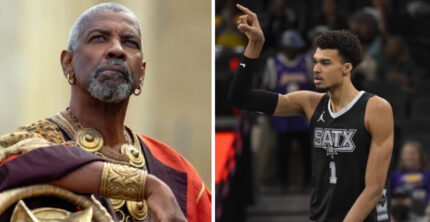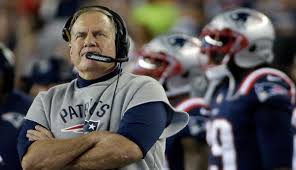About the same time the hip-hop community began recovering from the stunning deaths of Biggie and Tupac and transitioning into a new musical era, two sports dynasties emerged. Both with similar philosophies for sustained success, overall structure, prolific scouting and shrewd drafting; The New England Patriots in the NFL and the San Antonio Spurs in the NBA.
Bill Belichick’s New England Patriots have been the standard for NFL success in the salary cap era. In four seasons, 2001-2004, the Patriots won three Super Bowls, earning props as the NFL’s first dynasty under the league’s “hard” salary cap. Since Belichick assumed the reigns in 2000, he’s led the team to 10 playoff appearances and just one losing season in 13 years.
Similarly, the Spurs have been able to avoid pitfalls by bringing in low-cost, low-maintenance guys who buy into the system. Head coach Greg Popovich, Tim Duncan and a musical chairs cast, have claimed four championships since 1999. No team in the four major professional team sports has had a better winning percentage during that span.
According to a 2010 article in howtowatchsport.com, from 2000 to 2010, we saw just 41 out of 510 NFL teams post seasons of at least 12-4 and only 20 have done better. Four of those teams were the New England Patriots (‘03, ‘04, ‘06, ‘07). Similarly, during that same time period, we’ve only seen 22 NBA teams post records of at least 58-24 (out of a possible 480), and only 16 have done better. Six of those teams were the Spurs from ’01-’03 and ’05-‘07). Although neither team has won a championship in the past five years, the tradition of excellence, being chip contenders and class continues.
This weekend, the Patriots find themselves one win over the Baltimore Ravens away from a sixth Super Bowl appearance in the Belichick-Brady era. The Spurs have the second most wins in the NBA, some younger legs, and look primed for another title run.
In a sports world known for its transience and “win-now” attitude, both teams have been able to overcome injuries and slight decay to their aging stars, by shifting the ingredients of the team, but never changing the recipe.
The Spurs have had the same GM, R.C. Buford, since 2002. Head coach Gregg Popovich, who sharpened his chops as a cap manipulator and talent evaluator by proceeding Buford as GM, has been holding down the bench since 1996, and is regarded as an X’s & O’s assassin.
Belichick has also established himself as one of the all-time technicians in his field, masterminding the only 16-0 regular season in NFL history. He’s had steady ownership in the Kraft family and his prowess as a GM has rivaled his brilliance as a coach. In New England, the Big Two – Brady and Belichick – have been the common pieces in the Patriot’s dominance. The coach/QB combo has remained solid and allowed the Pats to build around the rocks of their franchise.
The Spurs Big Three are all original draft picks – Duncan, the No. 1 pick in 1997; Ginobili, taken with the 57th pick in 1999; and Parker, the 28th pick in 2001 – and have been the glue and main contributors to the Spurs’ consistency.
The Spurs have surrounded these dudes with a mix of veteran free agents, draft steals and obscure players. They buy into Popovich’s philosophies of ball movement and defense, accepting roles that suit the team objectives.
A list of top ballers like Steve Kerr, Danny Ferry, Terry Porter, Robert Horry and Michael Finley, signed with the Spurs late in their careers, and eventually sacrificed to be there. Of late, other lesser known player like Gary Neal, Danny Green and Nando De Colo, who played for France in the Olympics, have come on the cheap and contributed to keeping the Spurs on top.
They just lost Ginobili for two weeks with a bum hammy, but they stay chill’ and just recalled guard Cory Joseph from the NBA’s D-League Austin Toros. No one expects them to miss a beat.
Draft steals Khawi Leonard (15th pick in ’11) and DeJuan Blair (37th pick ’09) are examples of San Antonio’s dynamite scouting department and evaluation skills. Their system has more flexibility than Don Cheadle in House of Lies and doesn’t sweat the impact of one player. Belichick is smoking the same stuff, going 11-5 with seventh-round pick Matt Cassel in ‘08, while Brady nursed a foul knee injury.
Viable, proven systems are in place for these franchises and their detail-oriented “super coaches,” who demand selflessness and sacrifice. Sustaining the loss of a key part becomes more manageable and certain pieces become interchangeable when there’s consistent leadership, allowing coaches to maintain the atmosphere and team philosophy, regardless of who is ripping the game-winning TD or stroking the terrycloth jumper.
The Pats are in the same gang. They’ve won with five different running backs leading the team in rushing and six different wide receivers leading the team in catches. Belichick’s made magic with short, shifty receivers like Julian Edelman (7th round), Wes Welker and Danny Woodhead (undrafted), who look more like history teachers than air raiders.
Just this past off-season, the Patriots lost rusher BenJarvus Green-Ellis to free agency and promoted former LSU third-round draft pick Stevan Ridley, who rushed for 1,246 yards and 12 TDs.
The respect for both coaches’ mad scientist-maneuvers has the rest of the league often scrambling and tossing cash around to keep up. While most of the NFL was wheeling and dealing and giving receivers like Pierre Garcon ($36 million), Vincent Jackson and Brandon Marshall salary-cap crippling contracts, Belichick laid low, signing vet Brandon Lloyd (74 catches) to a manageable three-year, $12 million deal. Bottom of FormWho is winning free agency?On D, Belichick signed Jonathan Fanene and Trevor Scott, for shorts.
Bringing in players with sound character is important to both teams, but the strength and accountability those players provide also allows the teams to sign players that are viewed as trouble makers or disgruntled vets, with little media or fan backlash.
Belichick took a gamble on Albert Haynesworth that didn’t pan out, but his flyer on the troubled Aqib Talib has hyped a shaky Pat’s secondary. The chances Belichick took with Randy Moss and Cory Dillon worked out too.
Winning has also given Belichick the confidence to chuck high-priced all-pros – guys that have played major parts in championship runs like Adam Vinatieri, Mike Vrabel, Richard Seymour, Damien Woody, Willie McGinest and Asante Samuel – when their street value got too high.
In the past, San Antonio has retired fan favorites like Sean Elliot and booted others (Malik Rose), and in March of last year, traded a major player in Richard Jefferson, to bring back Stephen Jackson. Jackson, who has played for seven squads, won a chip with the Spurs in ’03, but is known tolick off a shot or two and involve himself in all-time pitiful NBA moments.
The steady-beat of consistent W’s goes on for the Spurs and the Pats, while the success of other franchises fluctuates “stripper on a pole” style. They even manage to weather controversy (Spygate) and come out on top (Horry’s hockey-check on Nash in ’07). Forbes listed them as the best teams of the decade in their respective sports, and neither is showing any signs of being killed off by the competition.
Last Sunday, third-stringer Shane Vereen went bonkers, scored twice, including one that came an over the shoulder bomb. You’d have thought dude was Marshall Faulk. Business as usual for the Pats – unknowns and lowly-touted cats turned into potent weapons…whenever they need it. Who knows who it’ll be this weekend. That’s why the Pats are the Pats, the Spurs are the Spurs – it’s less about the products as it is about the machine. And the Pats machine seems to be headed to Nola.


